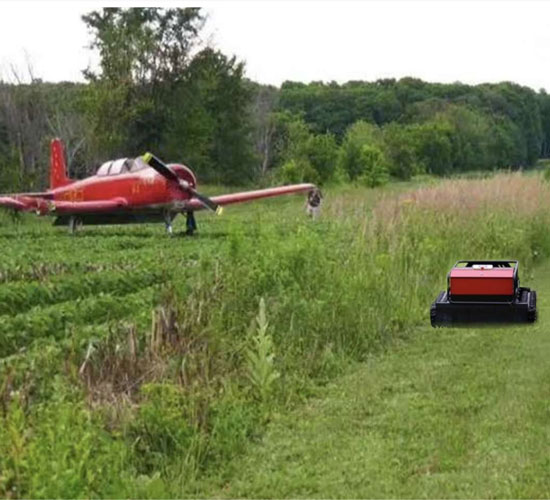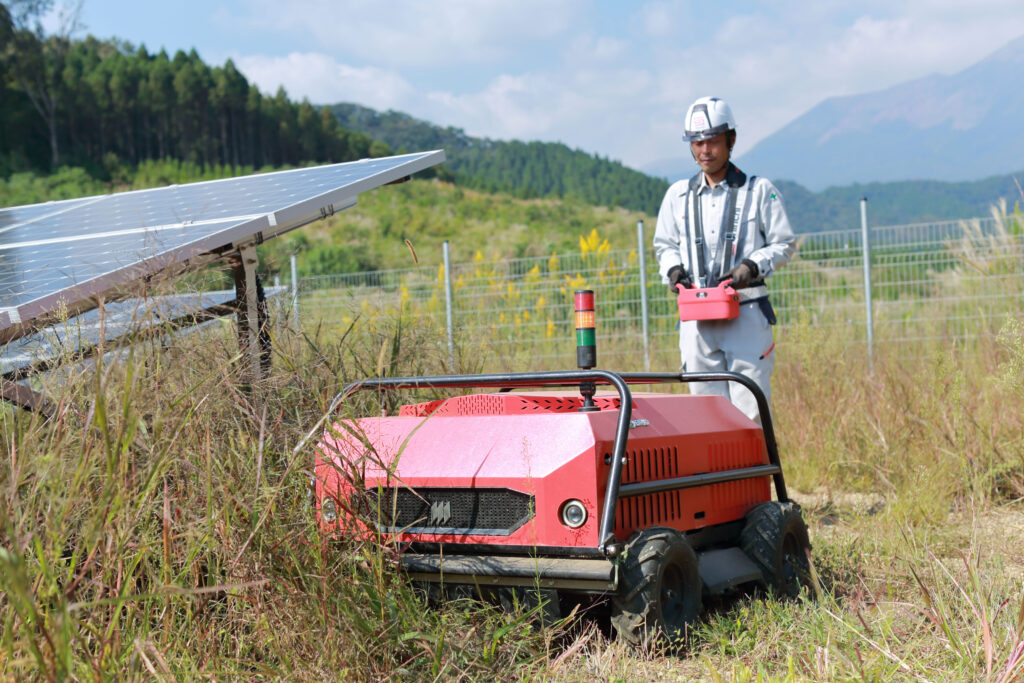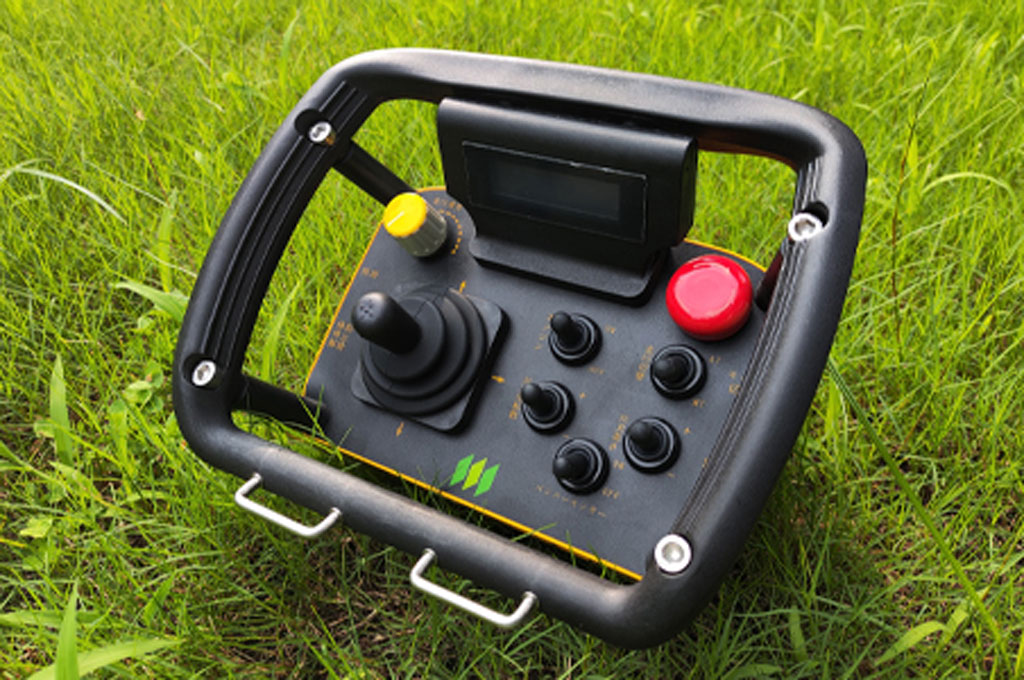Introduction
A lawn mower is no longer just a household tool for trimming small gardens. With the expansion of solar farms, airports, orchards, and other large-scale facilities, the demand for efficient and safe grass-cutting solutions has grown rapidly. In this context, the remote control lawn mower has emerged as a practical choice. Unlike traditional mowers, it allows operators to cut grass safely from a distance, making it suitable for steep slopes, hazardous environments, and wide industrial sites.
Classification and Comparison of Lawn Mowers
Gasoline-Powered Mowers
- Application: Large outdoor areas, farms.
- Advantages: Strong power, mobility, effective cutting performance.
- Disadvantages: High noise, fuel cost, and poor environmental performance.
AC-Powered Mowers
- Application: Small private gardens.
- Advantages: Environmentally friendly, low operating cost.
- Disadvantages: Dependence on cable power, poor portability.
Battery-Powered (DC/Lithium) Mowers
- Application: Courtyards, parks, urban landscaping.
- Advantages: Clean energy, easy operation, intelligent upgrades.
- Disadvantages: High price, limited runtime.
Remote Control Lawn Mower (Industrial Grade)
- Application: Solar farms, airports, orchards, slopes, and wetlands.

- Advantages:
- Safe operation in difficult or dangerous terrains.
- Reduced labor intensity, especially in large-scale projects.
- High adaptability for uneven ground, tall grass, and remote sites.
- Disadvantages: Higher upfront investment, but offset by long-term efficiency gains.
Development History of Lawn Mowers
Since Edwin Budding invented the first lawn mower in 1830, the industry has evolved from manpower to mechanization, and from electrification to intelligence. In recent decades, the shift toward automation has accelerated.
- Manpower era (1830–1880s): Manual reel-type mowers.
- Motorization era (1890s–1950s): Gasoline-powered and ride-on mowers.
- Intelligence era (1960s–present): Battery-powered machines, robotic mowers, and now remote control lawn mowers designed for industrial use.
The introduction of remote control technology is considered a milestone, bridging traditional mowing and fully autonomous mowing robots.
Industrial Applications of Remote Control Lawn Mowers
Solar Farms
Vegetation management is a critical challenge in photovoltaic power stations. Overgrown weeds reduce panel efficiency and can cause fire hazards. A remote control lawn mower for solar farms ensures safe mowing beneath panels and in narrow rows without damaging equipment.
Airports
Airports require large-scale grass maintenance for safety and visibility. A remote control slope mower for airports improves efficiency, reduces manual labor, and enhances operational safety near runways and fences.
Orchards and Vineyards
In fruit farms and vineyards, vegetation control is essential for crop health. Remote-controlled mowers provide precise operation between rows, reducing herbicide use and improving sustainability.
Slopes and Wetlands
Traditional mowers struggle with steep slopes or wetlands. The crawler-type industrial remote control lawn mower can handle inclines and soft ground while ensuring operator safety from a distance.
Global Market Status and Industry Chain
The global lawn mower industry reached US$31.8 billion in 2021 and is projected to hit US$44.1 billion by 2027, growing at a CAGR of 5.6%. While household lawn mowers dominate in North America and Europe, demand for remote control lawn mowers is expanding in industrial markets worldwide.
- Upstream: Engines, lithium batteries, and remote control systems.
- Midstream: Manufacturing and OEM brands.
- Downstream: Distributors, project contractors, and online channels.
China has become a major exporter, with remote control mower technology gaining recognition in overseas markets due to cost advantages and adaptability.
Competitive Landscape
Global leaders such as Husqvarna, Deere, Toro, and STIHL continue to dominate, but Chinese manufacturers are rising in the industrial segment. Companies specializing in remote control slope mowers are positioning themselves in the solar, airport, and agricultural sectors, where demand is expected to grow sharply.
Future Trends
- Electrification: Transition from gasoline engines to lithium battery-powered systems.
- Intelligent Operation: Integration of GPS navigation and automation for industrial projects.
- Safety and Efficiency: Remote control mowers reducing on-site labor risks.
- Market Growth: Expanding adoption in solar farms, airports, and other industrial facilities worldwide.
Conclusion
The remote control lawn mower represents the future of industrial vegetation management. With its adaptability to solar farms, airports, orchards, and challenging terrains, it not only improves safety and efficiency but also aligns with the global shift toward intelligent, environmentally friendly solutions. For industries seeking reliable, scalable, and cost-effective mowing equipment, remote-controlled technology is no longer optional—it is essential.


